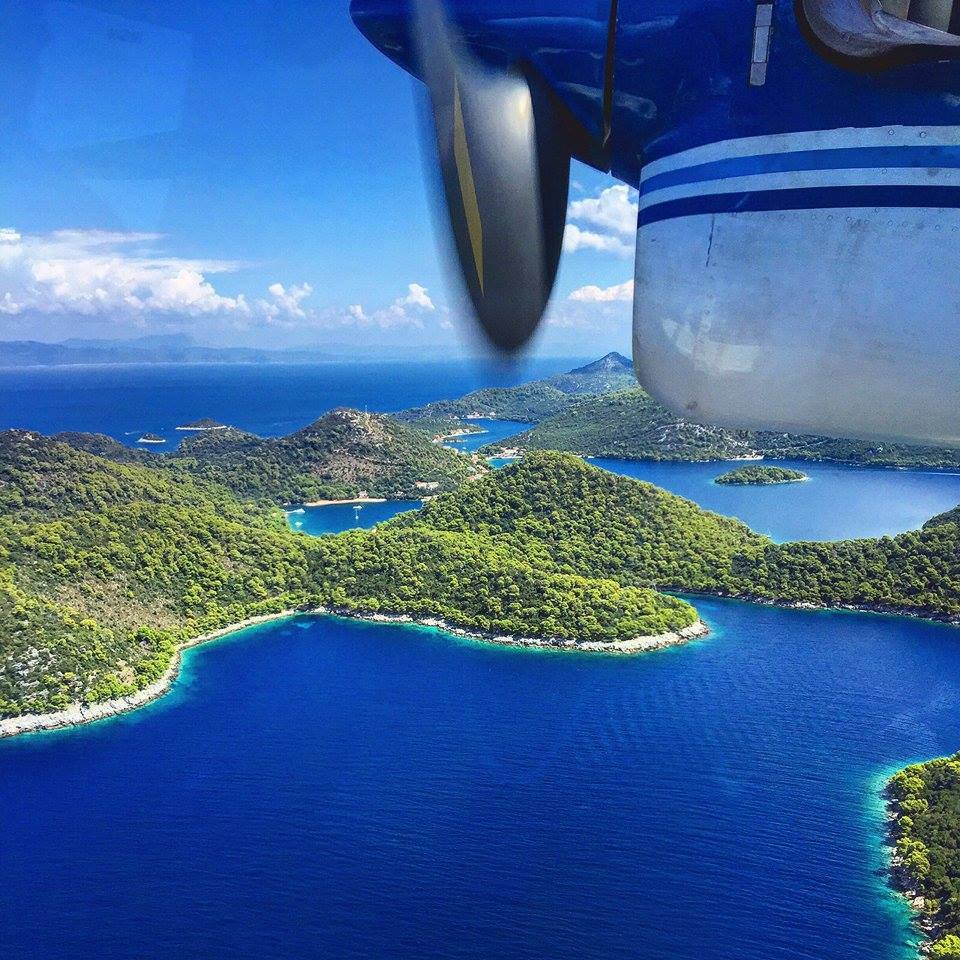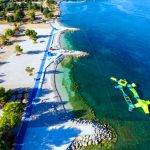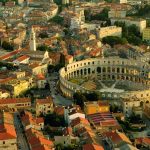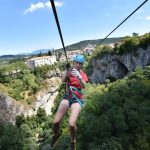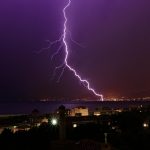Widely known for its picturesque old peninsula, Rovinj is the most romantic small town in the Adriatic. Colorful houses, specific shape, and crystal clear sea give it a fantastic view. Come to Rovinj and explore its unique charm around vivid, narrow, and steep old town streets.
- Welcome!
- How to get to Rovinj and get around
- 5 things not to miss
- Where to stay?
- Where to eat?
- Top 5 day trips from Rovinj
- 3 things you didn’t know about Rovinj
- Beaches in Rovinj
Welcome to Rovinj-Rovigno!
Standing on the western Istrian coast, Rovinj is a top Croatian tourist destination for many reasons. Apart from being one of the most beautiful cities on the Adriatic, it stands out due to its great tourist offer, excellent hospitality, and beautiful surroundings.
Spend your best holidays in Croatia’s top hotel and camping resorts, from where you can easily walk down to the gravel and rocky beaches with Blue Flags.
Taste the local cuisine – Istrian prosciutto, asparagus, truffles, olive oil – in one of many restaurants by the sea. Did you know that Rovinj is home to the first Michelin star awarded restaurant in Croatia?
Rovinj or Rovigno is the same because both Croatian and Italian are official languages in Istria. About 400 residents in Rovinj and surrounding towns even speak Istriot, one of UNESCO’s 20 most endangered languages. Istriot language is called “Rovignese” in Rovinj.
Learn what other languages people speak in Istria.
Rovinj’s cultural heritage will impress you. Many even consider Rovinj the most beautiful coastal town in Croatia. Come, feel, and see for yourself.
How to get to Rovinj and get around
Rovinj lies along the western coast of Istria, the biggest Croatian peninsula. If you’re coming to Istria from neighboring countries by car or bus, or far away countries by plane, you have all the instructions in our dedicated guide – How to get to Istria.
The closest airports to Rovinj are Pula, Rijeka, Trieste, Ljubljana, Zagreb, and Venice.
Coming from Pula Airport, you can take the shuttle bus from the airport to Pula and then take a bus to Rovinj. Also, you can rent a car from Pula and take an easy 30-minutes drive to Rovinj on the Istrian Y motorway or local road. Private transfers to Rovinj are also available.
Looking for a fast, reliable and trouble-free transfer to or from Rovinj? Contact TC transfer partner Adriatic Transfers for your one-stop solution.
Rovinj is very well-connected with bus lines from many Croatian destinations – Rijeka, Zagreb, Osijek, and many other smaller towns. Therefore, if you find yourself anywhere in continental Croatia, you can easily reach Rovinj by bus.
If you’re somewhere in Dalmatia and want to visit Rovinj in Istria, the fastest way is to catch a bus to Rijeka and then change the line to Rovinj. Numerous bus lines operate from Rijeka to Rovinj throughout the year, and especially during the summer season.
One more option to arrive in Rovinj is – by boat. Adriatic Lines and Venezia Lines provide ferry lines from Venice to Rovinj (and other Istrian towns) during the season. There are numerous local seasonal boat lines from nearby Poreč, Pula, Umag, and Novigrad.
Getting around Rovinj
To get around Rovinj, take a nice walk, especially in the hilly and cobblestoned old town, full of stairs. It is a car-free zone.
If you’re coming to Rovinj from outside the center, you can rent a bike or a car. Hotel and camping resorts around Rovinj usually provide shuttle buses and boat transfers to the old town.
Bikes or cars are also useful if you want to explore Rovinj’s beautiful surroundings. It would be a shame not to visit Rovinj’s neighboring attractions such as Palud Cove, Lim Fjord, olive oil production sites, and numerous bays, explained later in this article.
Parking
As already mentioned, Rovinj’s old town is a car-free zone. Before exploring it on foot, you can leave your car at the nearest and biggest parking lot Valdibora – Big and Small.
You can check all parking spaces and lots on the map below. Be careful, parking spaces located near the city center and pedestrian zone are charged!
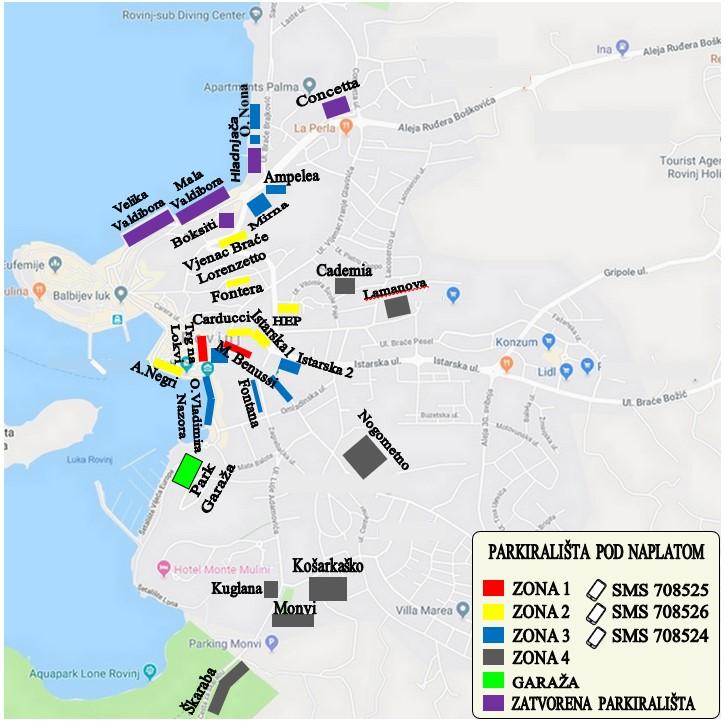
5 things not to miss in Rovinj
1. Church of Saint Euphemia
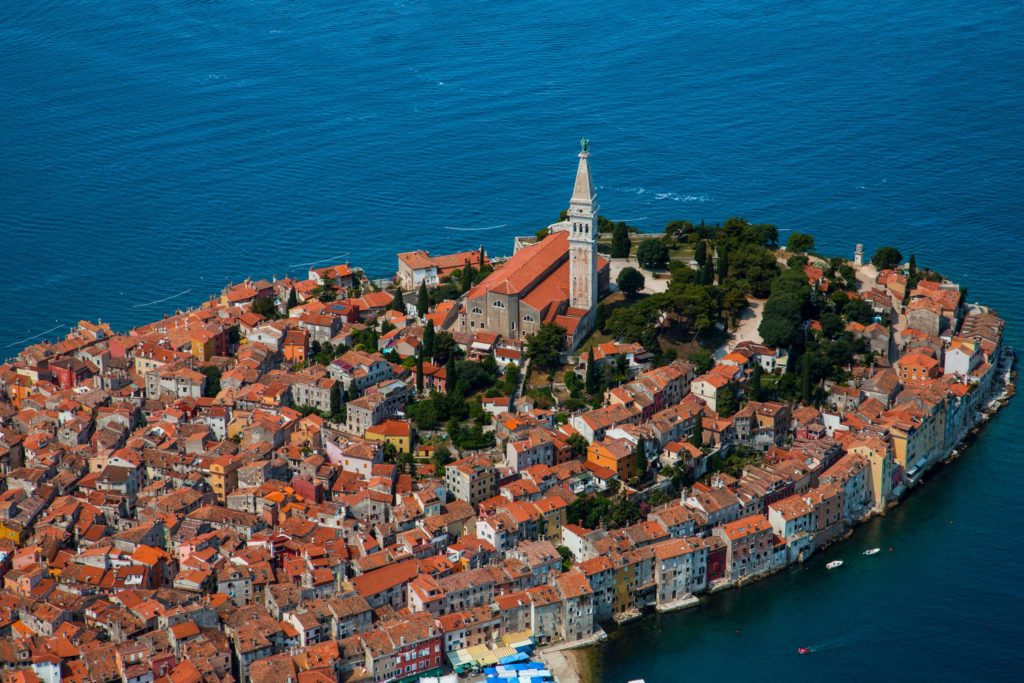
When you come to Rovinj, the first thing you see is the bell tower of Saint Euphemia Church, Rovinj’s symbol. It should simply be on your visit list of Rovinj. Standing at the top of Rovinj peninsula hill, it is as magnificent from a distance as it is when you find yourself at its foot.
The beautiful interior of this baroque church in the Venetian style is adorned with numerous altars and statues. You will see the altar of the martyr Saint Euphemia, the patron saint of the city, but also the sarcophagus of her relics dating from the year 800.
At the bell tower’s top stands a statue of Saint Euphemia, which, depending on the wind, rotates around its axis. With 61 meters of height, it’s the highest church bell tower in Istria.
It provides a magnificent view of Rovinj and its surroundings. The azure and the Brijuni Islands in the south will enchant even the ones hard to impress. When the weather is nice, you can even see the Alps on the north!
2. The Golden Cape Park Forest (Zlatni Rt)
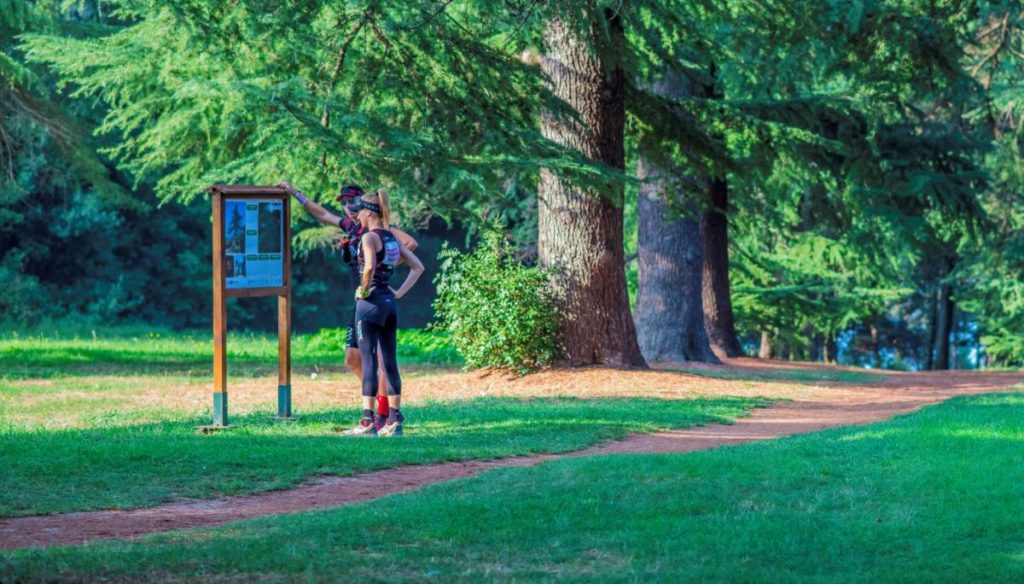
The biggest natural attraction in Rovinj is the famous Golden Cape Forest Park. This protected area is unique in indigenous and planted plant species.
If you prefer an active holiday, you will love running, cycling, exercising, or just walking in this oasis. You will also love the rocky and pebble beaches at Golden Cape. The old quarry at the edge of the forest is a favorite place for free climbers.
Precisely this place is responsible for the beginnings of tourism in these areas! At the end of the 19th century, German Georg Hütterott wanted to arrange the Golden Cape and build a climatic health resort there. He failed to realize his ambitious project, but his idea remained and came to life today, albeit in a slightly different form.
3. Ruins of Monkodonja – “Istrian Stonehenge”

Also known as Istrian Stonehenge or the Mikena of Istria, the ruins of Monkodonja is an archaeological site near Rovinj from the Early to the Middle Bronze Age. Monkodonja is actually an old settlement built in the drywall technique of several tons of heavy stone blocks.
This magnificent site stands on a hill and is surrounded by thick and wide stone walls. Thus it represents a typical example of a “gradina” type of settlement. There are as many as 350 such settlements in Istria, and Monkodonja is just one of them.
Rovinj, like the whole of Istria, hides many historical secrets. Start discovering them with Monkodonja.
4. Ghost town Dvigrad
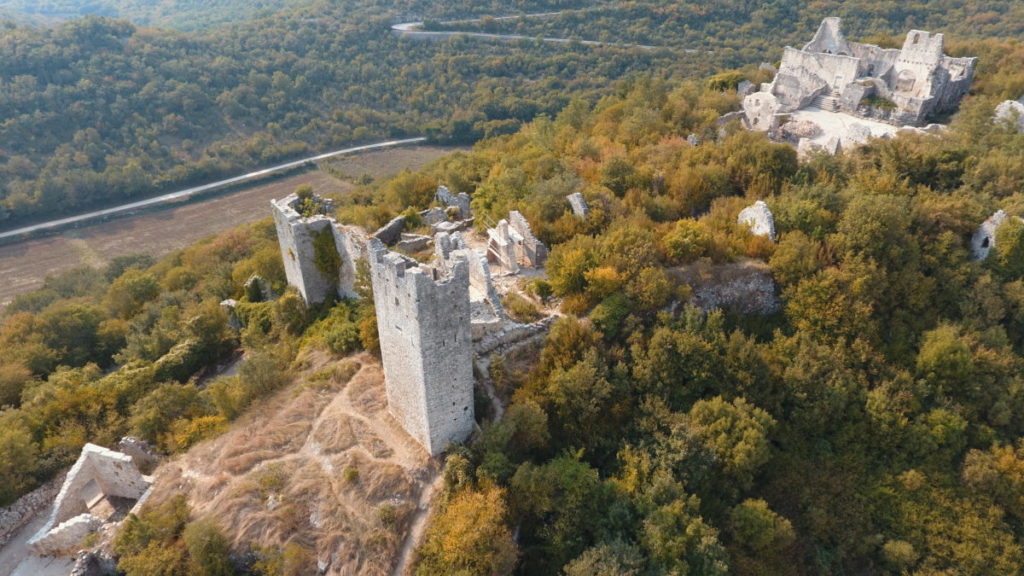
Dvigrad is an uninhabited Istrian medieval town. It hides in the Lim Bay, a valley stretching from the Lim Channel to Pazin. Two parts – Moncastel and Castel Parentino – today are just ruins, although only ruins of Moncastel are still there to visit.
This ghost town was first mentioned in 879. Today its ruins are the most important and most famous cultural asset of Kanfanar. Besides, it is special because people didn’t destroy it by force but left it to the ravages of time.
Since it has been abandoned for centuries, there is a legend that the British pirate Captain Morgan buried his treasure near the place.
This mysterious site hides centuries-old historical secrets you must discover. Today you can visit this site for free. See the double defensive walls, the city gates, remains, streets, stairs live. And at the very top are the ruins of the Saint Sofia Church.
5. The most famous Instagram location in Rovinj
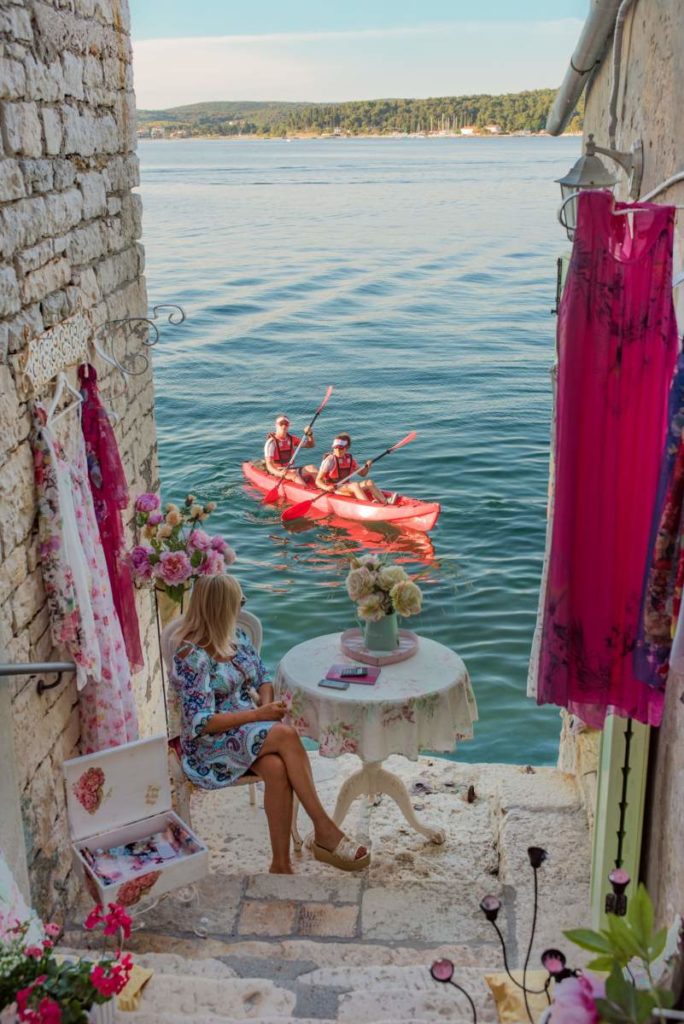
A table and a chair, some flowers and decorations between stone houses, overlooking the perfectly blue sea. You have probably seen this place somewhere in the depths of Instagram. Yes, this lovely spot hides within the romantic Rovinj’s old town streets.
Take a seat in a magical scenery by the water. Make sure to take a photo with a fairytale-like seaview, and let your followers envy you.
Find this spot in the Vladimir Švalba Street, across Angelo D’Oro Hotel.
Where to stay in Rovinj
Whether you are on a budget or want to enjoy a luxurious stay, Rovinj offers a wide range of accommodation facilities.
The view of the beautiful blue sea extends from almost all corners of the Maistra’s hotels and resorts in Rovinj. Five-star Monte Mulini Hotel is among the top luxury hotels in Croatia, together with stylish Hotel Lone and elegant Grand Park Hotel. Due to its various facilities, playgrounds, and pools, Hotel Amarin is a paradise for families with kids.
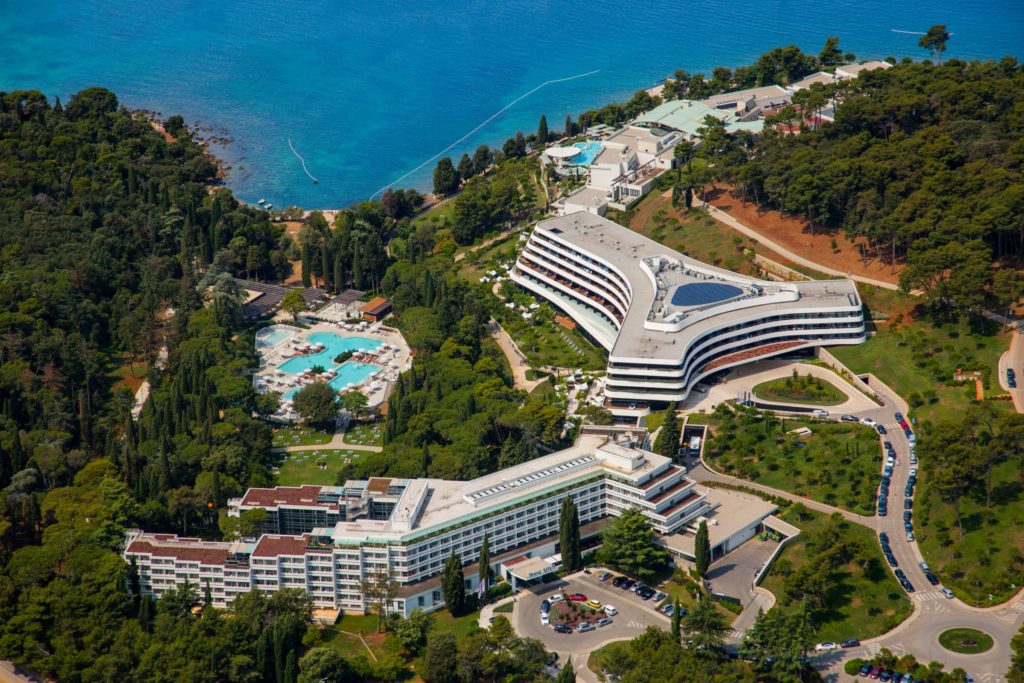
Pick between numerous hostels and private apartments around the town. Or check camping and tourist settlements along the Rovinj coast.
Where to eat in Rovinj
Rovinj would not be the top Croatian destination if it weren’t home to some excellent restaurants.
As the world’s best region of olive oil, a leading wine destination, and along with Italy, the only place in the world where you can find truffles, Istria is a real gourmet paradise. Therefore, visiting Istrian towns and not tasting Istrian specialties is like you haven’t even been there.
When in the Rovinj old town, don’t miss to taste the haute cuisine in Monte restaurant at the Saint Euphemia Church’s foot. Monte is the first Michelin star awarded restaurant in Croatia! In this top-notch restaurant, regularly present in the world’s best restaurant guides, Istrian and world cuisine tastes intertwine in creative dishes resembling works of art.
Near St. Euphemia, you will also find the restaurant La Puntulina. In addition to an excellent offer of meat and seafood specialties and wine, this restaurant will leave you breathless due to its irresistible location right next to the sound of sea waves. Its elegance is undoubtedly one of the most romantic places in this above all romantic city!
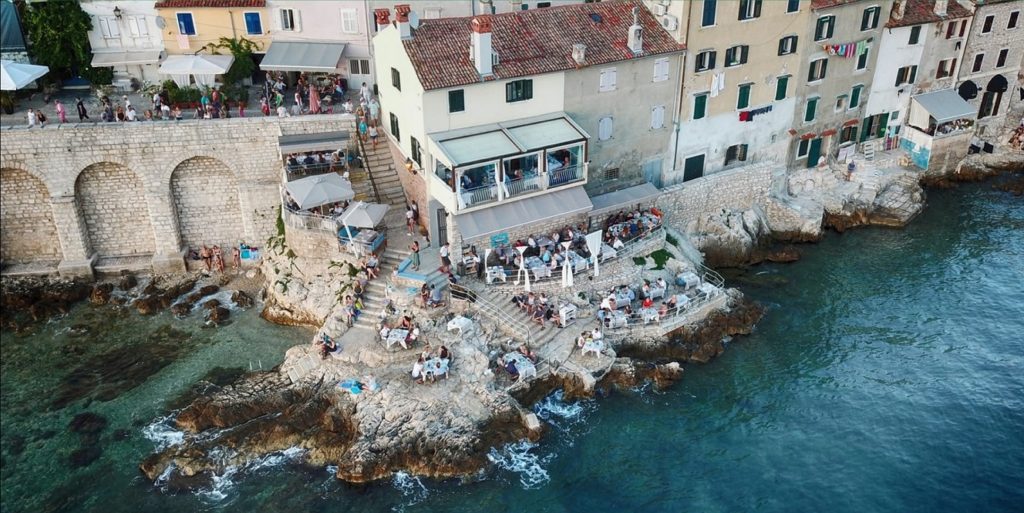
Other popular Rovinj restaurants are Wine Vault and Mediterraneo in Monte Mulini Hotel, restaurant Orca opened during the whole year, and restaurant Maestral with a complete view of the Rovinj peninsula.
Istrian prosciutto, Istrian boškarin beef, asparagus, fish, seafood, but also excellent pizzas, are difficult to describe in words. It would be best if you tasted it yourself.
Top 5 day trips from Rovinj
1. Venice
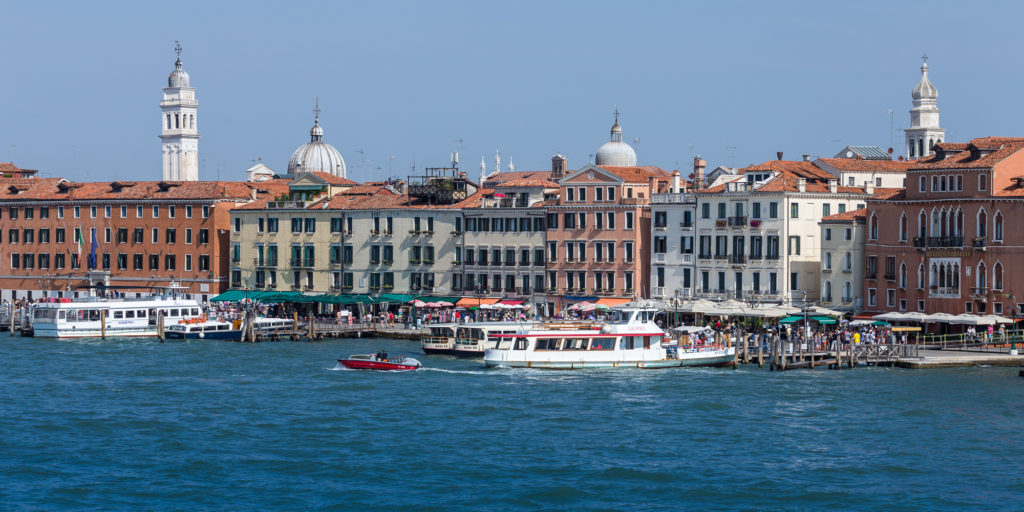
The coronavirus pandemic currently hampers cross-border travel. However, you can always plan them, or at least dream about them.
A one-day trip from Rovinj to Venice is undoubtedly the most attractive journey you could experience during your holidays. This year, the Adriatic Lines from one picturesque city to another will start operating in June. Every Friday until the end of September will be a chance to hop to the eastern Adriatic coast. Venezia Lines will publish their sailing schedule soon.
2. Poreč
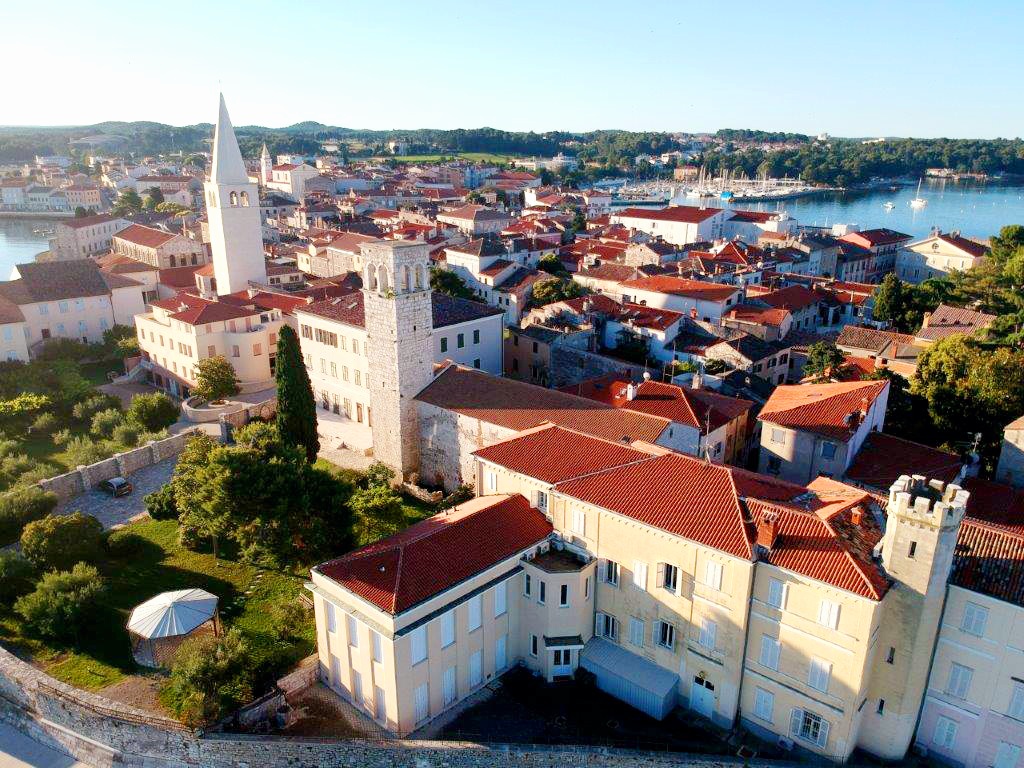
While in Rovinj, it’s an excellent opportunity to visit its neighboring city of Poreč, another Istrian jewel. It is only 40 kilometers away. You must visit the Euphrasian Basilica, a UNESCO world heritage site and one of the best-preserved monuments of early Byzantine art in the Mediterranean.
Poreč is rich in history and culture, as well as in tourist facilities, which makes a perfect blend for a day trip. Together with Rovinj, Poreč has been among the top Croatian tourist destinations. Sail away to Poreč or take a short bus ride. It will be worth it.
3. Lim Fjord
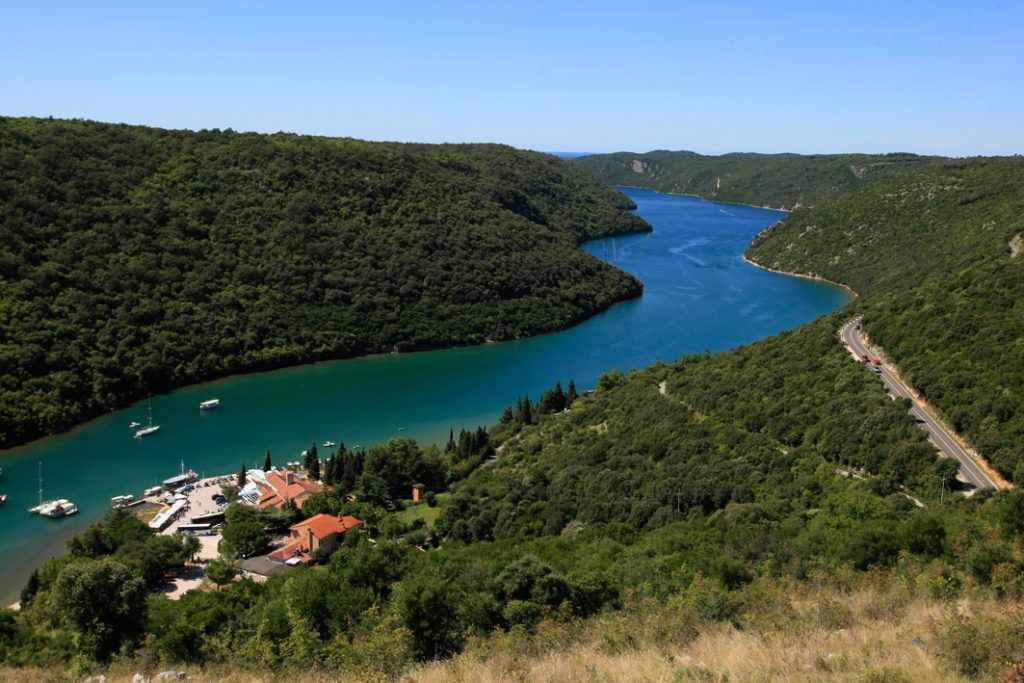
One of the most popular day-trips from Rovinj is a visit to Istria’s magnificent natural beauty – Lim Fjord or Lim Bay. It is a sunken karst valley of the Pazinčica River.
Spend one day on a fish picnic with sea specialties in this beautiful, protected landscape, and take a swim between the surrounding hills. The bravest can also set out to free climbing on the bay’s steep slopes.
4. Palud Cove Ornithological Reserve
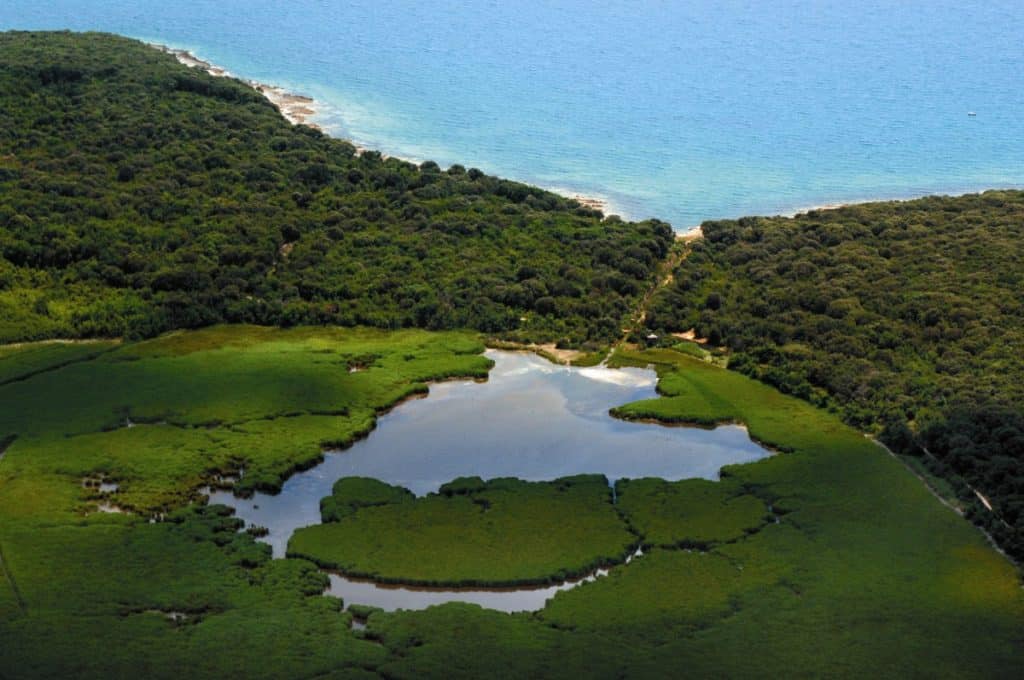
The Palud – Palù wetland area is the only and unavoidable ornithological park in Istria. It is a natural depression with brackish water, connected to the sea by the 200-meter-long canal.
The canal was dug in 1906, while an Austro-Hungarian military base was operating in Barbariga to increase salinity and thus prevent the reproduction of malaria-carrying mosquito larvae.
Within the reserve are the remains of the church of St. Damian, built in the 11th century. Rumor has it that even Pope Alexander III visited this church and held a mass there. You should visit it too!
The swamp is home to 220 resident and migratory bird species, making this area the perfect place to enjoy birdwatching, just eight kilometers south of Rovinj. A visit to the reserve is free, and pre-arranged birdwatching lasting 2 hours costs 50 kunas for adults and 40 kunas for children. Book your place in the group here.
5. Grubić olive mill

Since Istria is the world’s best olive region for the sixth consecutive year, it would be a shame to get to know more about this golden liquid. And taste it, of course! If you’d like to have an active and educative trip, visit the Grubić Mill, where you can learn about olive oil production from breeding to processing.
A visit to the mill shows oil production today and how it used to be done in the past. In front of the olive mill, you will see the Queen, a 400-year old female olive tree. The best time to visit it is October during the harvest.
3 things you didn’t know about Rovinj
1. Rovinj used to be an island
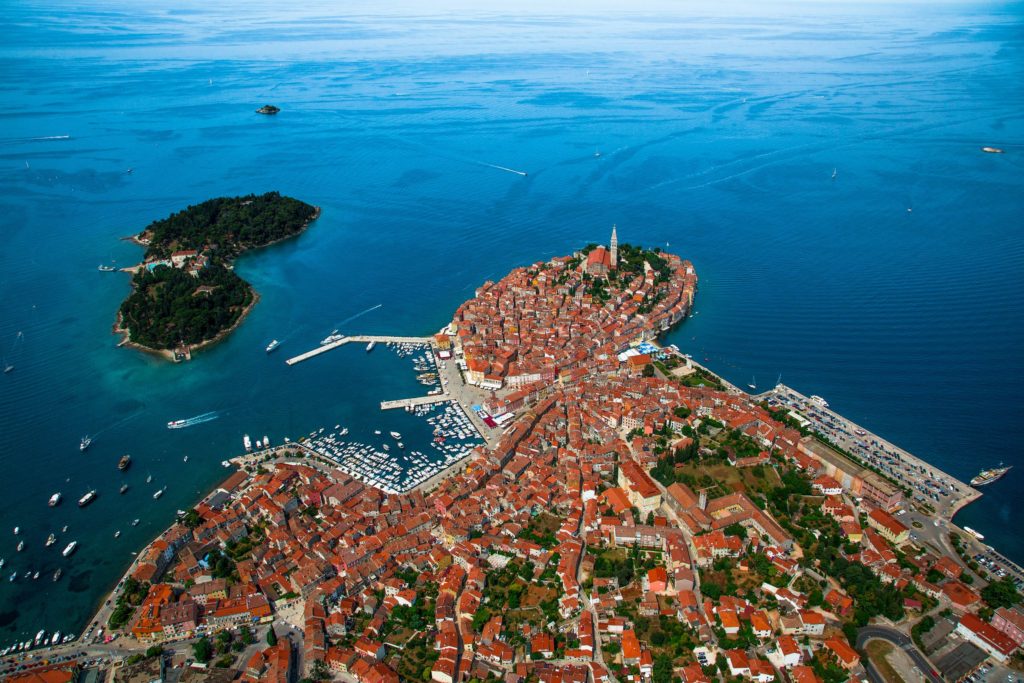
Yes, what is known today as the old town of Rovinj used to be an island. Thanks to the limited space on the island, Rovinj’s old town’s streets are narrow and steep, for what is Rovinj special today.
High stone walls were used to protect Rovinj island until 1763. That’s when the narrow channel which separated it from the mainland was filled in. At that time, Rovinj was the most densely populated town in the Venetian part of Istria after Koper.
2. Croatia’s top tourist destination
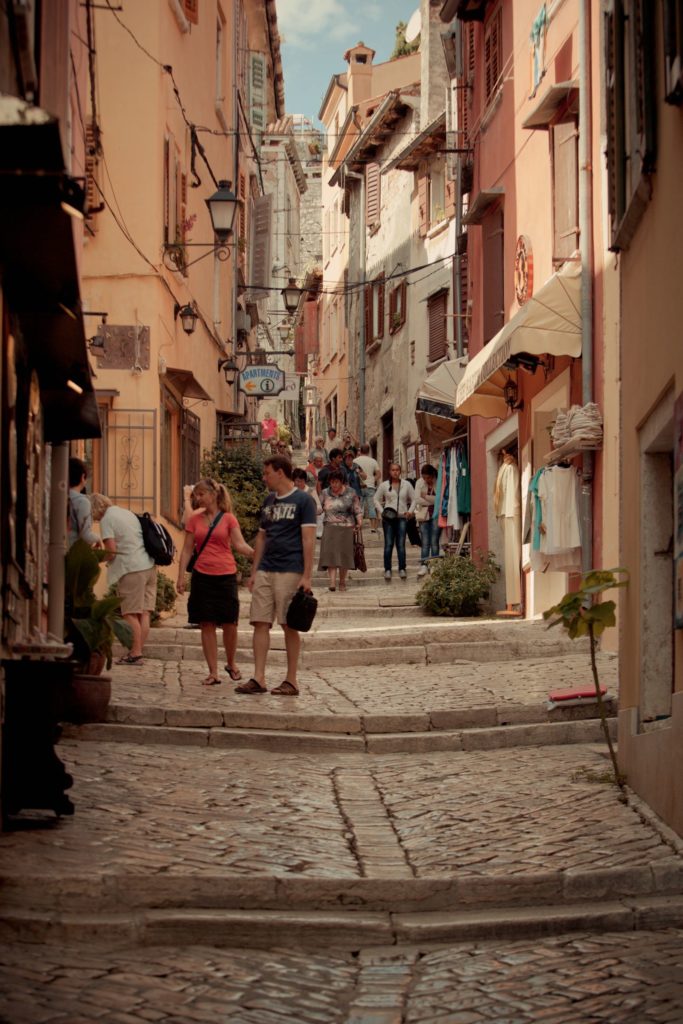
Among many Croatian coastal towns, Rovinj has been the top tourist destination for years. Even last year, Rovinj realized the second-highest number of overnight stays in Croatia, right after the island of Vir.
Not only Rovinj has a long and successful tourist tradition, but it also offers the best quality of life to its citizens.
Namely, Rovinj was voted as the best medium-sized city in Croatia last year. At the same competition, Rovinj was in the finals in the categories of economic achievements and education and demographic policy, which also speaks volumes.
Thus, Rovinj could become your perfect destination if you’re a digital nomad. Imagine waking up to this beautiful landscape and calling it home.
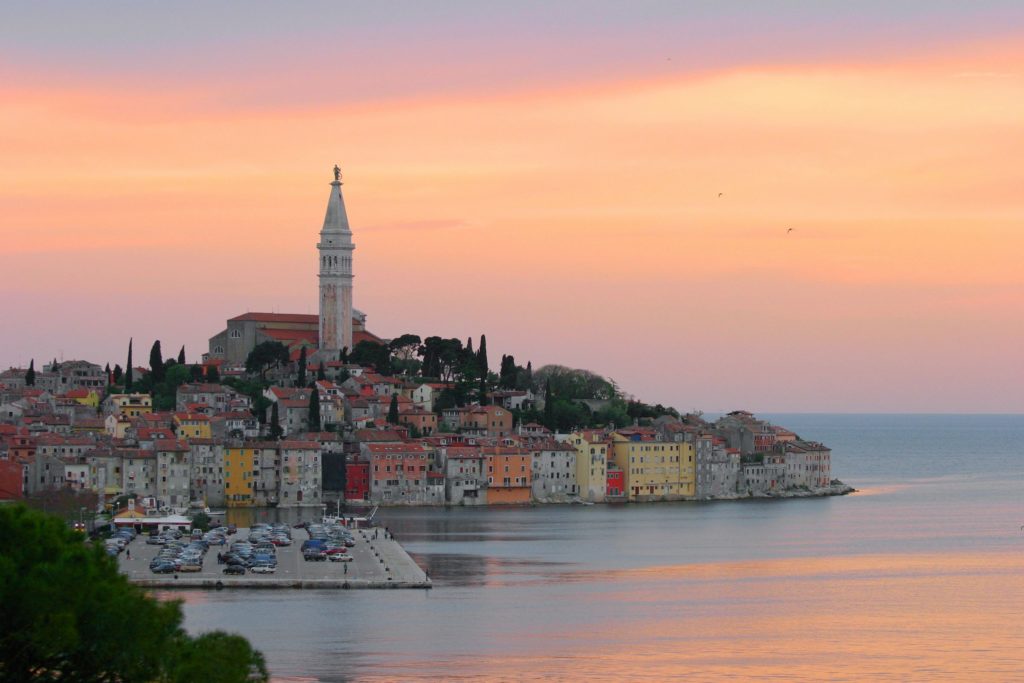
3. UNESCO Protected Batana Eco Museum
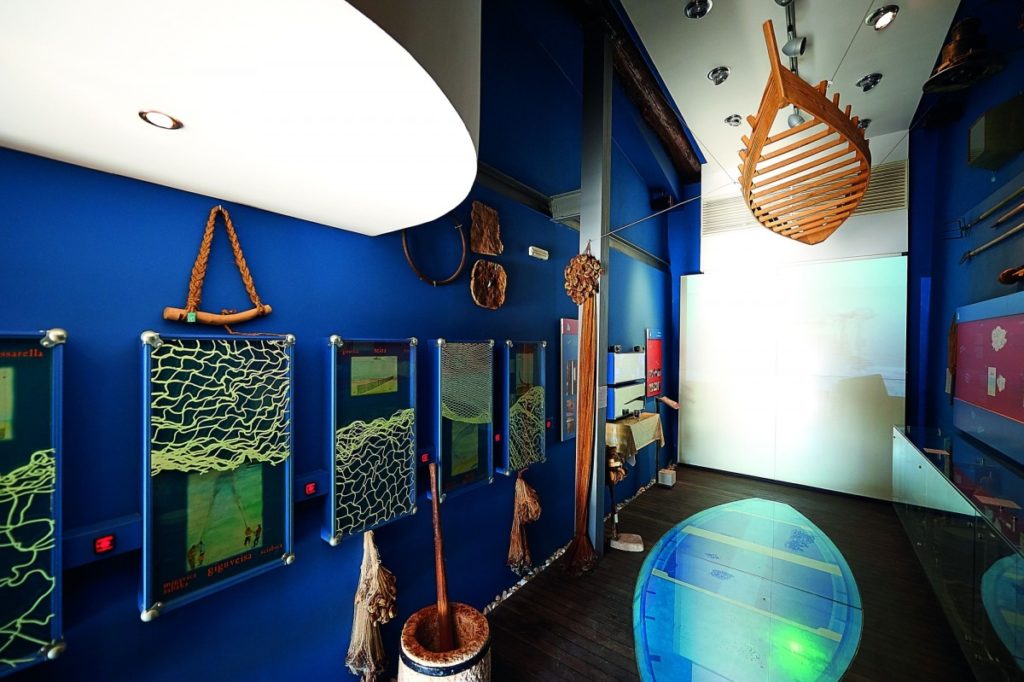
A part of Rovinj’s rich fishermen tradition – batana boats – have even been protected by UNESCO.
Namely, the traditional Rovinj batana boats are unique due to their longevity and traditional way of construction. These flat-bottomed, wooden vessels are still a big part of Rovinj’s everyday life. By walking along the sea in this area, you can notice Rovinj batanas. However, they are also exhibited in the Batana House Eco Museum.
UNESCO named Batana Eco Museum’s project as one of the best practices for the preservation of the world’s intangible cultural heritage. You can also hear traditional fishermen’s songs “bitinade” in this museum, sung in Rovinj dialect. The Museum will re-open its doors to visitors at the end of June after the reconstruction.
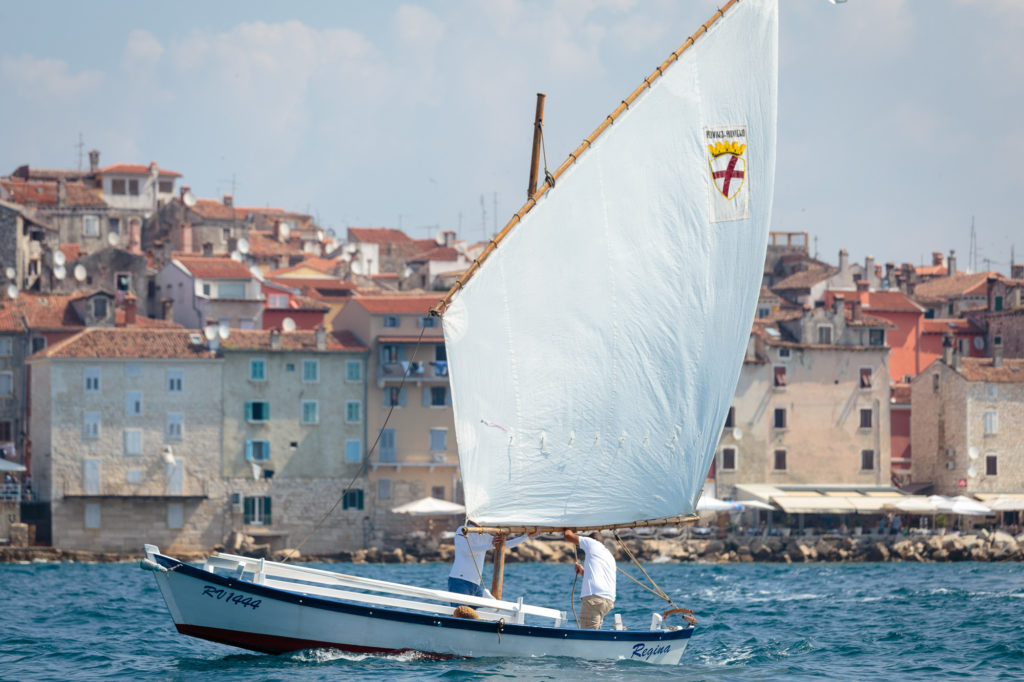
One of the best ways to feel the spirit of the destination is to explore its cultural heritage. Since Rovinj is Croatia’s top destination, the options to explore are endless. Here are 25 more things to know about Istria’s pearl.
Beaches in Rovinj
If you choose to stay in one of the numerous hotels in Rovinj, you will probably have a beach right in front of you. Such beaches are Amarin, Villas Rubin Beach, Mulini Beach, Val Saline, Polari Bay.
Rovinj’s beaches are mostly rocky, gravel, and concrete. Beaches Lone Bay, Cuvi Bay, and Moulin Rogue Beach are covered in fine gravel. However, those fond of sandy beaches won’t be disappointed either, as the greenery, rocky capes, hidden bays, and many facilities amaze everyone who comes here. Besides, the best tourist results prove that many have been happy to return to Rovinj for years.
Many beaches in Rovinj have a Blue Flag, meaning the sea’s purity and coastline’s orderliness are highest. Out of numerous beaches in Rovinj, everyone can find a perfect spot to soak up the sun. Pick the right one for yourself here.
Naturist beaches in Rovinj
Rovinj and Istria have been welcoming naturists from around the world for decades. Koversada naturist park near Vrsar is one of the oldest and largest in Europe. Naturist beaches also lay within camp Veštar, camp Valalta near Lim Fjord (one of the best naturist camps in Europe), auto camp Polari (Punta Eva Bay).
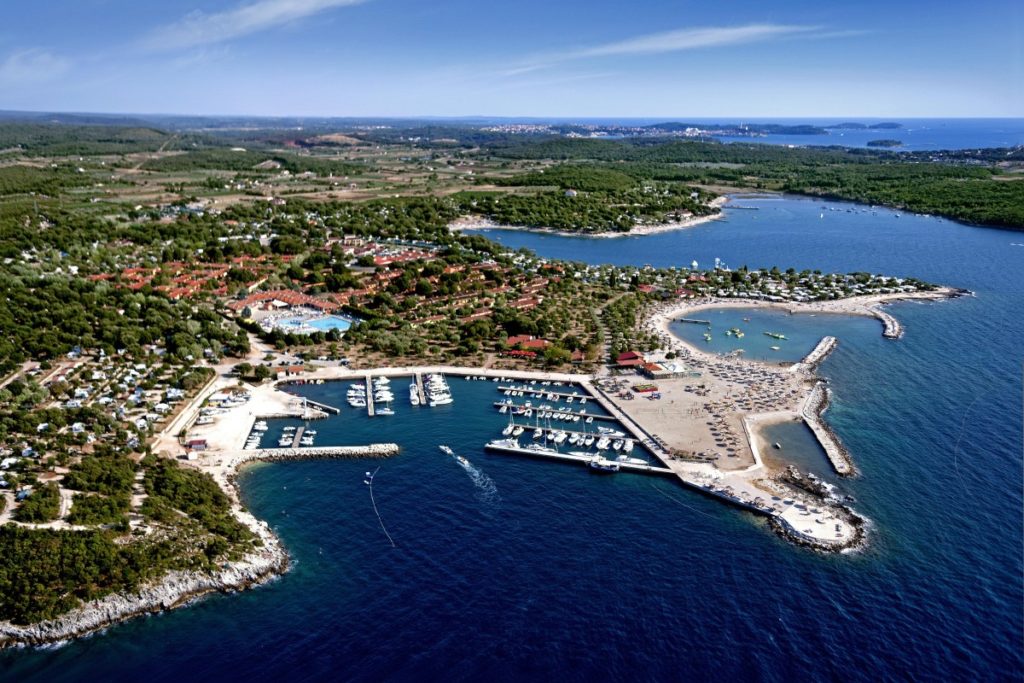
The islands of Sveti Andrija and Maškin, connected by an artificial embankment and the common name Crveni Otok (Red Island), hide attractive coves for nudists. You can take one of many scheduled boats from the town to Red Island throughout the day. There are also many more bays and secluded places around Rovinj where nudists can freely stay.
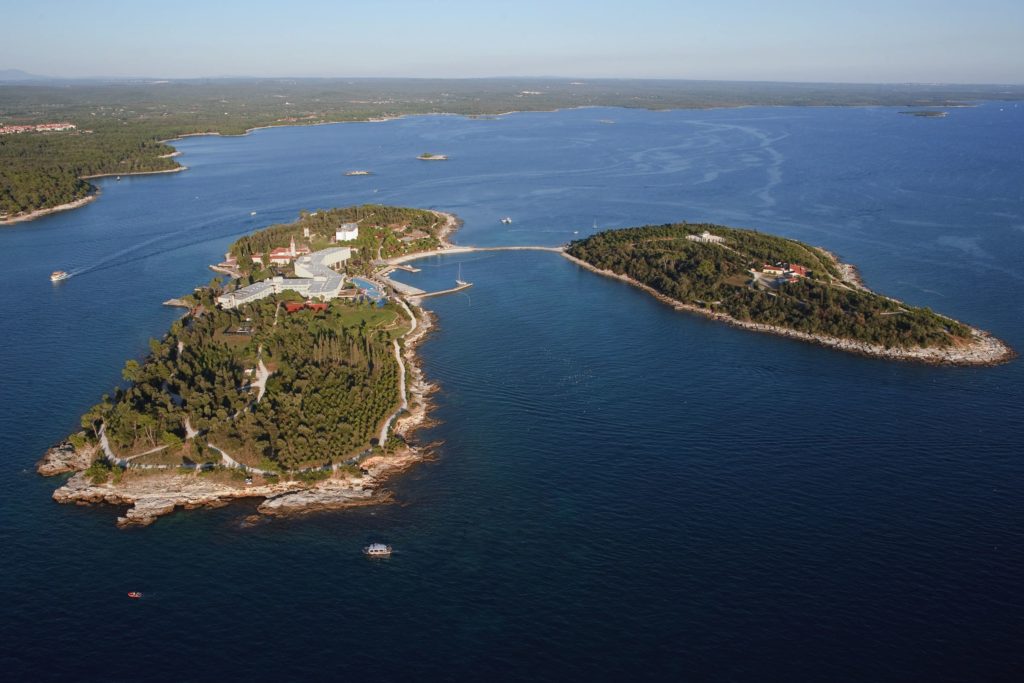
To follow the latest news from Rovinj, check out the dedicated TCN page.

